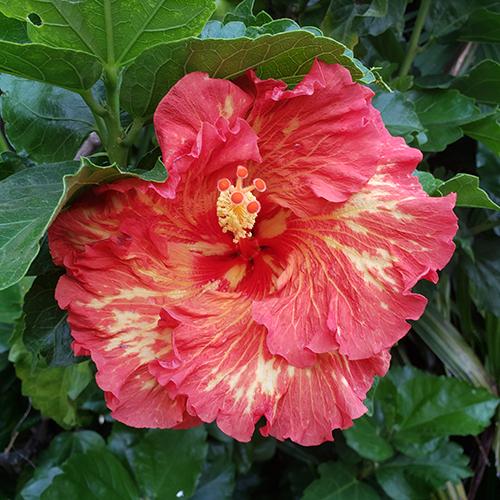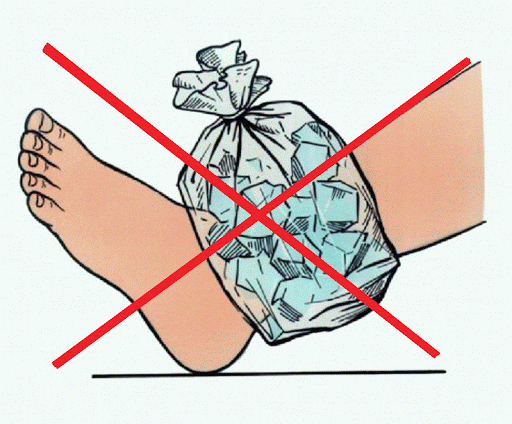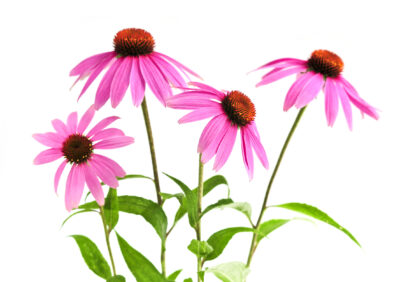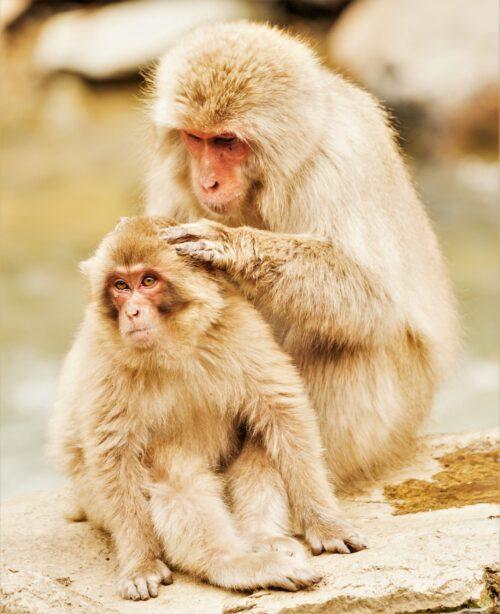
Benefits of Hibiscus
Hibiscus helped save our puppy We found a pedigree Golden retriever for sale for $50 in the local paper. At the time, they were selling

The Question: Does cryotherapy, the use of extreme cold in surgery or other medical treatment, improve outcomes for acute soft tissue injuries?
I have been playing basketball for more than six decades and although it is purported to be a non-contact sport, I have sustained a plethora of injuries, so I have some experience treating them.
I also taught herbal medicine at several massage colleges for more than thirty years and many times to students who had already taken a course in sports massage, where they were taught to respond to soft tissue injuries with RICE, Rest, Ice, Compression and Elevation.
The use of ice or cold water with soft tissue injuries is often advocated, but what research is there to prove that it actually works?
I have been teaching that heat is more effective in assisting the body to heal itself.
RICE is the accepted model, but Ice and Compression are but allopathic (suppress the symptoms) responses to inflammation, which the body produces naturally in flooding the area with blood and lymph to bring healing.
After much push-back from my students, I did an internet search for evidence of any benefit to icing an injury in the acute stage, such as immediately after you sprain your ankle.
I found that the effect of cold therapy on the most common acute soft tissue injuries, including strains and bruises, has not been proven.
The effects of ice have been demonstrated in numerous animal models and human studies. Ice reduces tissue temperature, blood flow, pain, and metabolism. However, and possibly more important is the question, “Does the application of ice actually impede the natural healing process?”
Does treatment facilitate achievement of goals related to functional limitations and sudden transient disability after injury or surgery?
Reports indicated that cold seemed to be more effective in limiting swelling and decreasing pain in the short term (immediately after application to one week post injury) but did not improve recovery times.
Let’s look at the two supposed benefits of icing a sports injury.
ice reduces pain
The experience of extreme temperatures, whether hot or cold, is the same – it hurts!
By the time you become numb from the extreme cold, the area is in hypothermia which is defined as a medical emergency that occurs when your body loses heat faster than it can produce heat.
And pain, by the way, is the body’s message to us to give it a rest. So elevation and rest are appropriate.
And, if required, a cup or two of willow bark tea, a natural aspirin, can help alleviate the pain without the use of ice.
DMSO (dymethyl sulfoxide) and CBD (cannabidiol) are also incredible pain relievers applied topically.
DMSO is a natural organic compound in the sulfur cycle of plants produced as a by-product of papermaking, extracted from lignin, an insoluble fiber in wood pulp.
Research shows that DMSO slows or blocks conduction of impulses along nerve cells, which in effect reduces pain from musculoskeletal injuries, postoperative incisions and other sources.
It is also warming to the area, which relaxes muscles and increases local blood and lymphatic circulation, assisting natural repair mechanisms.
A hot water bottle is also helpful here and is preferred to heating pads as heating pads emit EMFs, electromatic fields that impede the healing process and actually promote abhorrent cell growth.
After the initial stages of injury, heat can be applied with alternating cold. Long heat, short cold. This is known as hydrotherapy and can accelerate the healing process.
CBD is an active compound in cannabis derived from the hemp plant.
A study from the European Journal of Pain showed, using an animal model, CBD applied on the skin could help lower pain and inflammation due to arthritis.
Another study demonstrated the mechanism by which CBD inhibits inflammatory and neuropathic pain, two of the most difficult types of chronic pain to treat.
The question here is, “do we really want to do that?”
As previously stated, ice and compression are allopathic responses to inflammation. Allopathy is the treatment of disease by conventional means, i.e., with drugs having opposite effects to the symptoms.
And inflammation in allopathic medicine is seen as a pathogenic condition to be reversed, in this case with anti-inflammatory drugs or ice.
Whereas in holistic medicine we don’t impede the body’s natural response, we assist it, in this case with the application of heat.
A smallish tornado passed through the alley a number of years ago, knocking a few out buildings off their foundations and knocking down a few fences. Not a major disaster.
Where I lived in Michigan growing up we had “real” tornadoes. They would zig zag along taking out some houses while missing others.
If that happened up on the hill where we live, the local parking would become seriously impacted by trucks delivering lumber, plumbing and electrical supplies and the like, as well as the workers clearing the debris and reconstructing the buildings.
The folks whose houses didn’t suffer damage could get upset about the lack of parking and put up a sign on the corner stating, “local traffic only”.
Can you imagine how much longer it would take to haul off the damaged stuff and bring in the materials to do the repairs.
That, in effect, is what happens when we employ ice and compression.
It is counterproductive.
Heat, on the other hand, will assist the process and get you back on your wheels faster.
So we have a new acronym. Rather than RICE we have HER, Heat Elevation and Rest.
An urban legend about not throwing rice at weddings because it could kill birds eating it is, of course, absurd. I mean what do we put in bird feeders. Seeds such as rice.
The real reason some establishments still outlaw its use is because of difficult cleanup and potential hazards for slipping and falling.
So rice is out at weddings, but also with the initial stages of soft tissue injuries.
Read more about the benefits of DMSO.
Teaching comprehensive holistic education since 1985.
We are currently offering interactive hybrid courses including Herbal Fundamentals, Energy Healing, Aromatherapy and Clinical Herbology
Hybrid means you may choose to participate in each individual class in the hybrid course online or in person.
All of our products are made with love from organic, all-natural and ethically sourced ingredients.
We began making and perfecting our own herbal remedies more than thirty years ago and offer our favorite products for purchase.

Hibiscus helped save our puppy We found a pedigree Golden retriever for sale for $50 in the local paper. At the time, they were selling
Hawthorn Berry Hawthorn is known as the heart herb for its many benefits as a heart tonic. The berry has been a key part of

Can you take herbal supplements to arm your immune system? You probably know that zinc, vitamin D and vitamin C are gotta-have-its. How about herbal

While attending San Diego State College in the early seventies, my work-study job was in the vivarium, a room for keeping and raising animals for